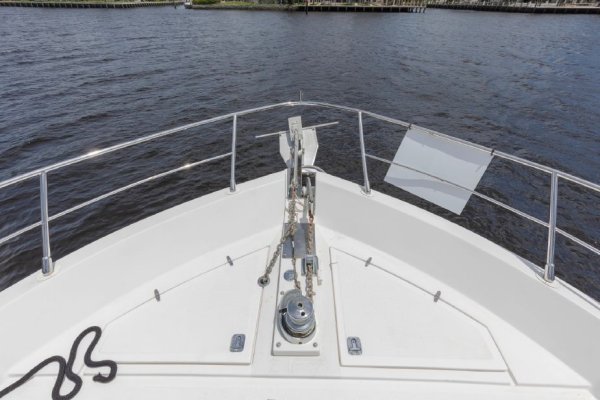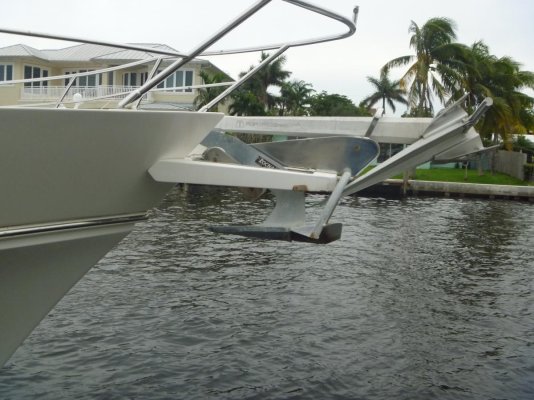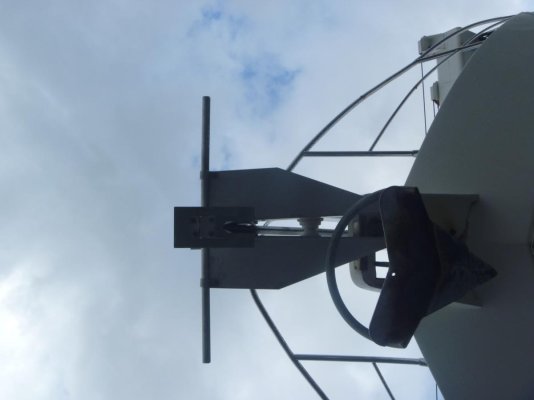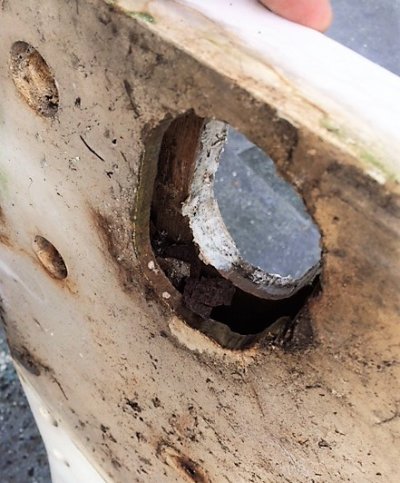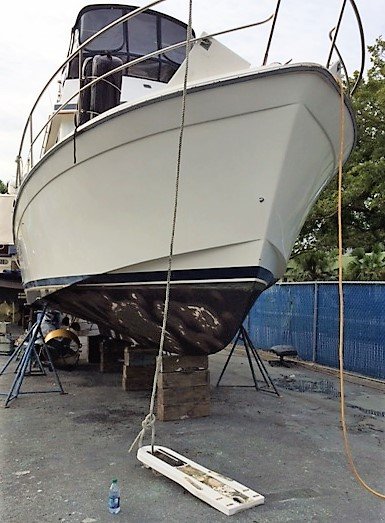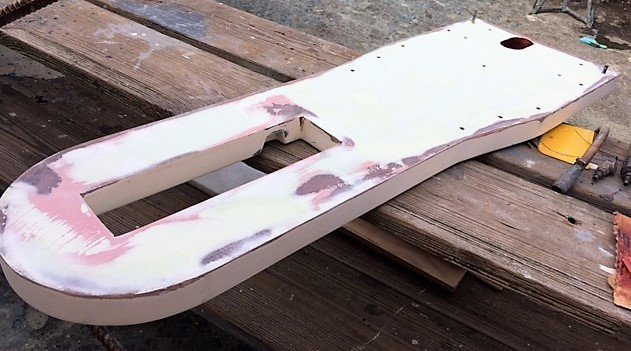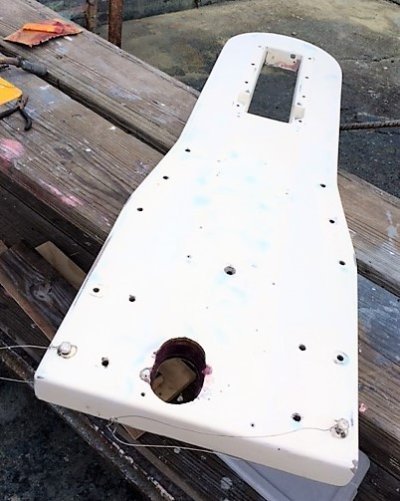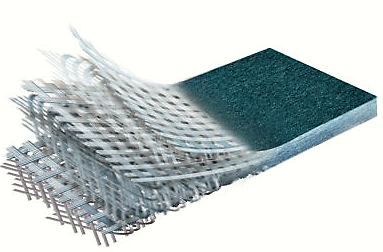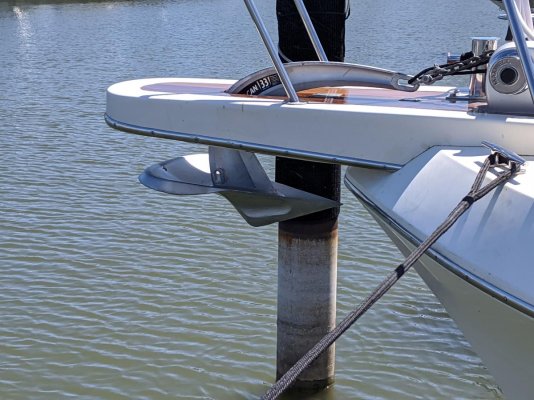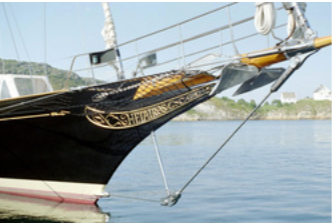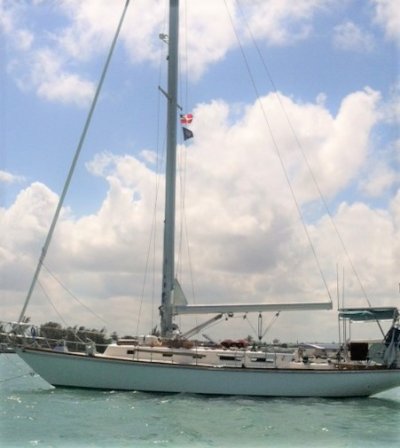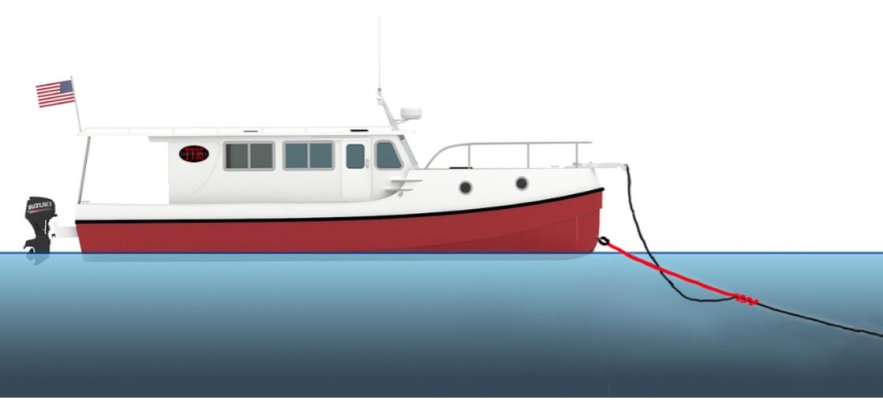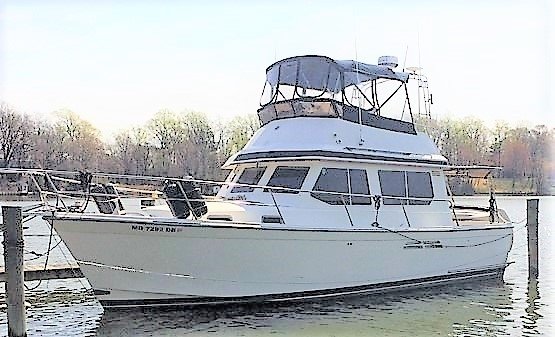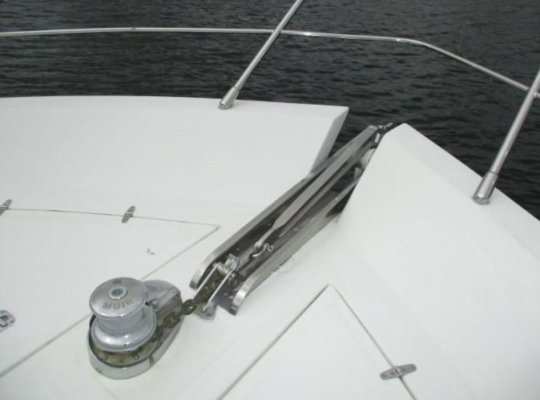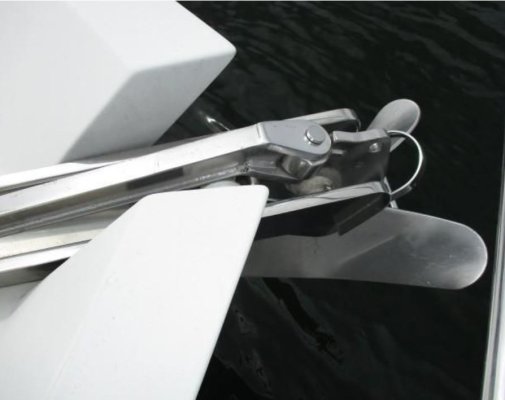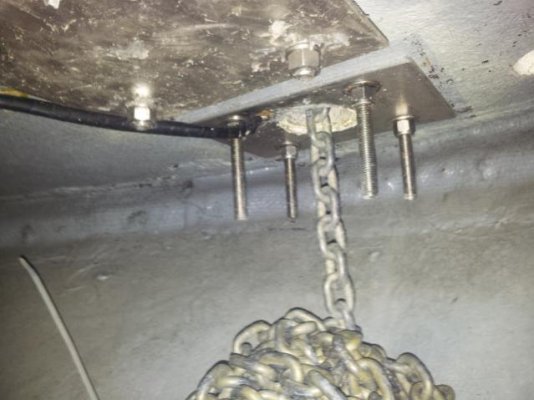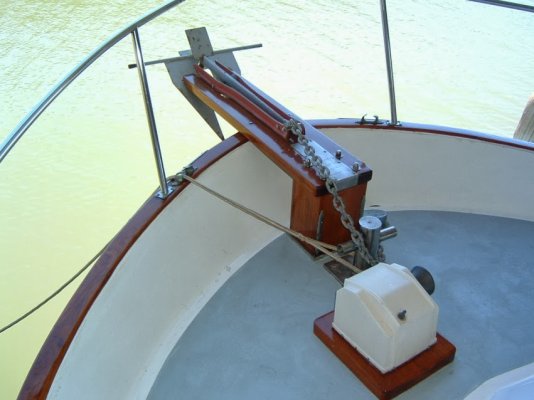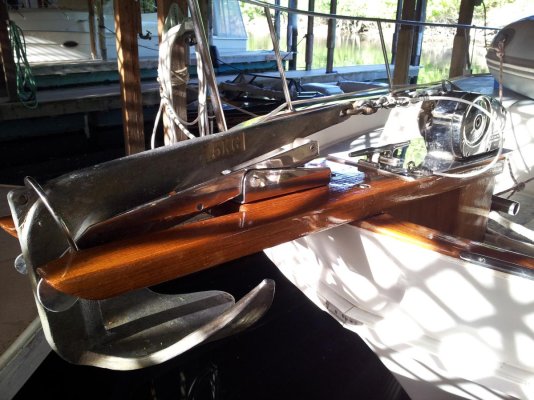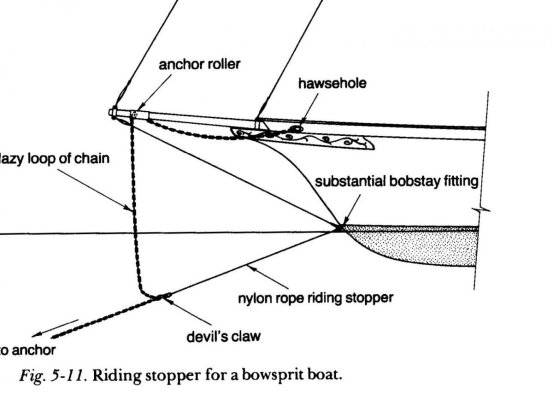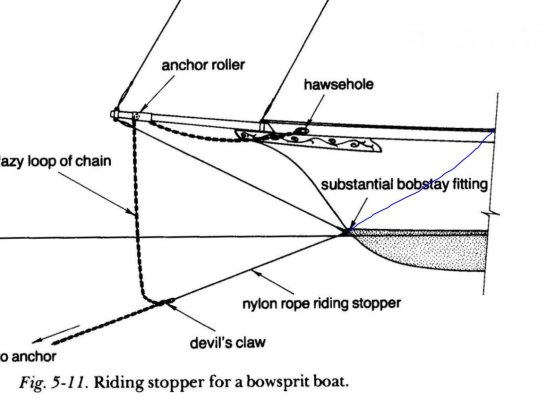I'm with Simi in this. When you're talking anchoring gear you want strength, and that means solid hardwood, or metal of suitable thickness and bracing. However, I repeat one observation I think extra pertinent.
Why weaken any anchor support by putting a large slot in it, when a better arrangement, with an appropriate roller with retaining bolt set-up, is easier and better and stronger, and still lets the anchor, of whatever type, lie flat once retrieved and parked, while at the same time making sure the fluke tip never comes near the bow then swinging in a rough water retrieval. This would be my concern re the suggestion by someone that he wonders why large boats even need a pulpit. Unless you've got a bit enough boat to have ship-like anchor hawse pipes with large stainless steel protection plates, you want to get it out and away from the nice gel-coated bow, right..?

